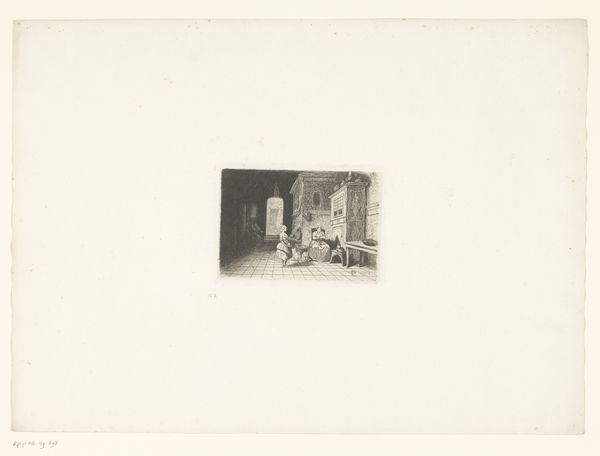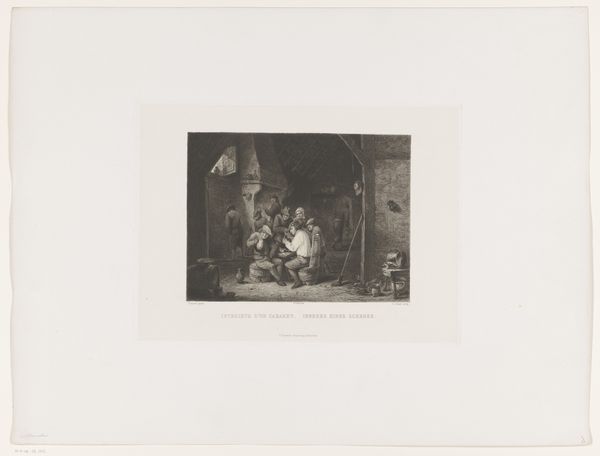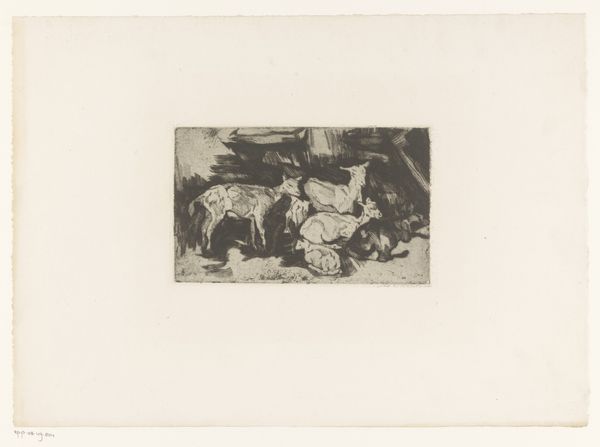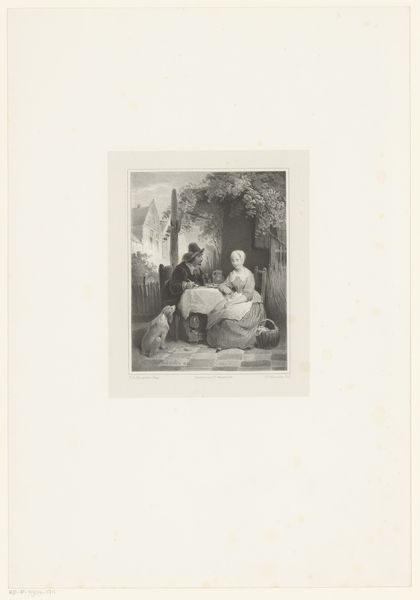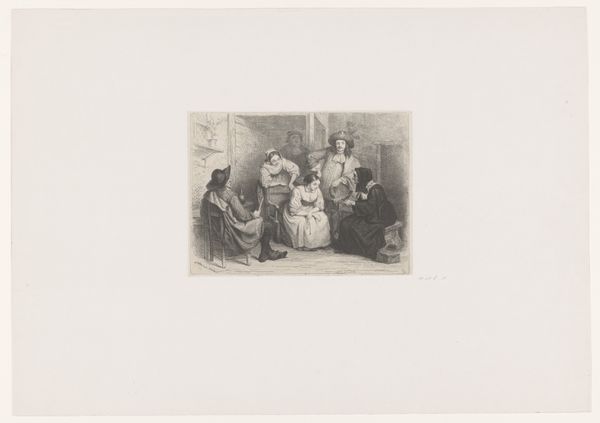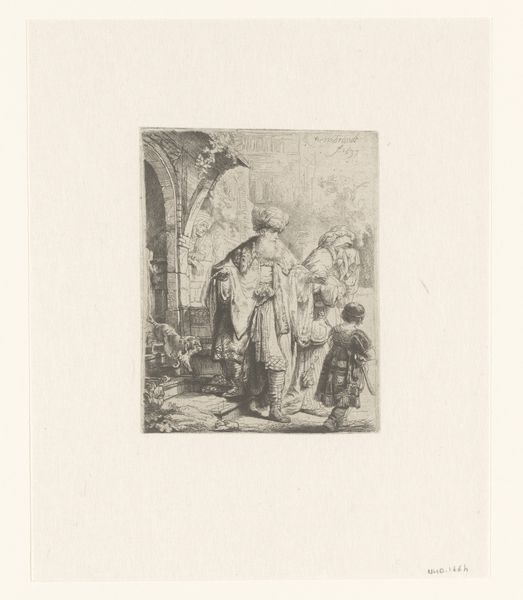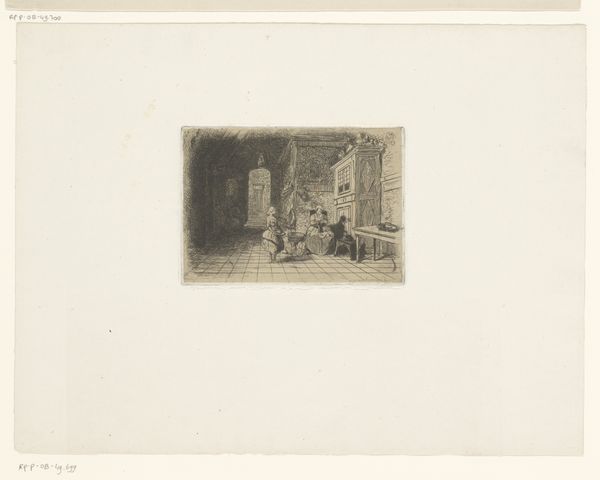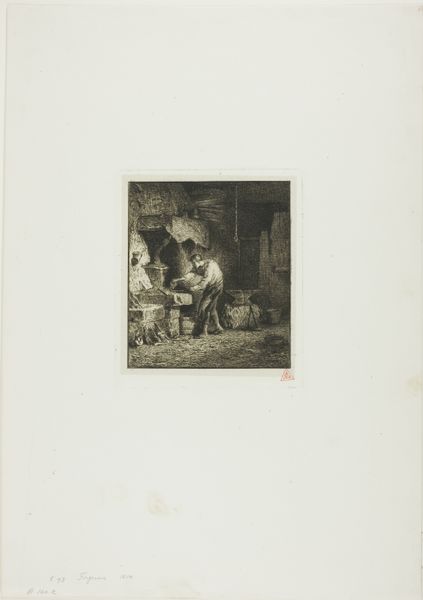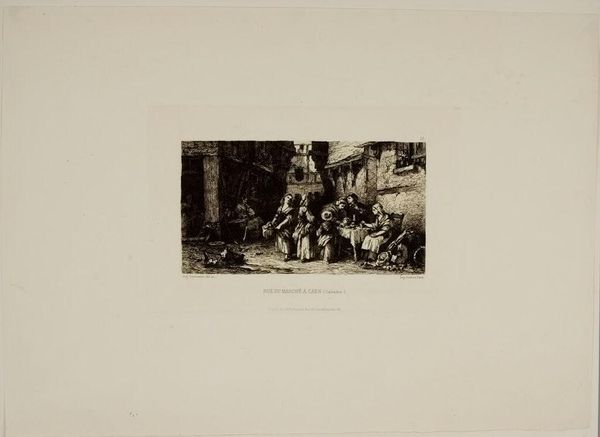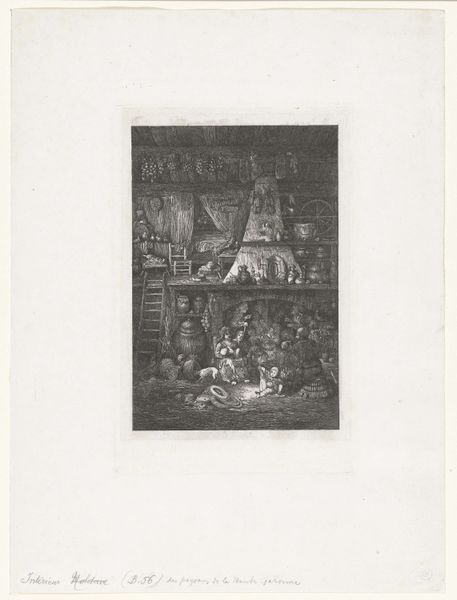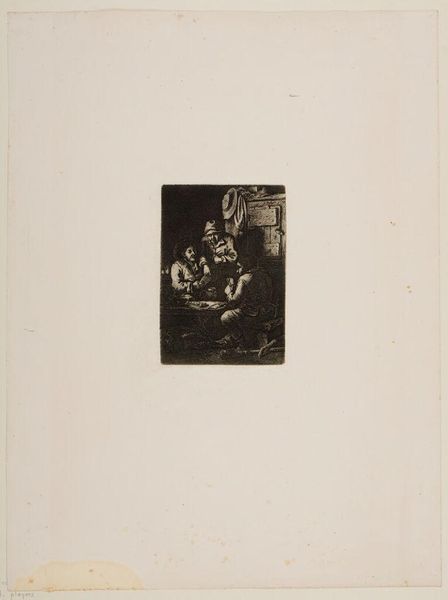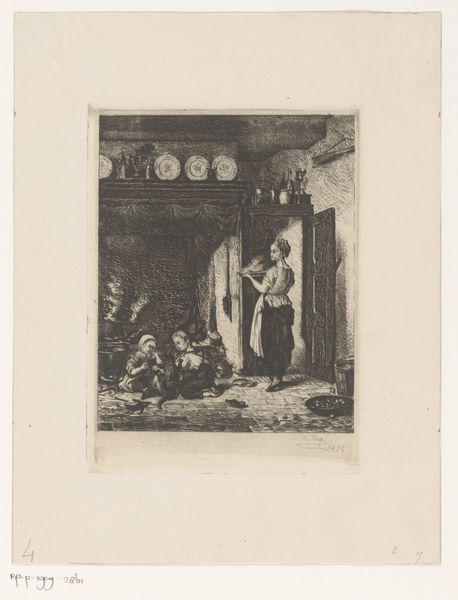
drawing, print, etching, woodcut, wood-engraving, engraving
#
portrait
#
drawing
# print
#
etching
#
figuration
#
pencil drawing
#
ancient-mediterranean
#
woodcut
#
united-states
#
history-painting
#
academic-art
#
wood-engraving
#
engraving
Dimensions: 2 7/8 x 4 15/16 in. (7.3 x 12.54 cm) (image)9 9/16 x 12 1/8 in. (24.29 x 30.8 cm) (sheet)
Copyright: Public Domain
This print was made by William B. Closson, using a technique called photogravure. It’s a printmaking method derived from photography, which gives it its distinctive look. The process begins with a copper plate, coated with a light-sensitive gelatin tissue. A film positive is then exposed onto the plate, hardening the gelatin in proportion to the light received. After washing, the gelatin forms a relief, which is then etched with ferric chloride. The acid bites into the copper, creating an image that can then be inked and printed. What’s fascinating about photogravure is its capacity to capture subtle tonal variations. The etching process creates tiny wells that hold varying amounts of ink, resulting in a print with rich blacks and delicate highlights. It’s a labor-intensive process, requiring skill in photography, chemistry, and printing. This reminds us that even in an age of mechanical reproduction, the hand is still essential, blurring the lines between craft and fine art.
Comments
No comments
Be the first to comment and join the conversation on the ultimate creative platform.
